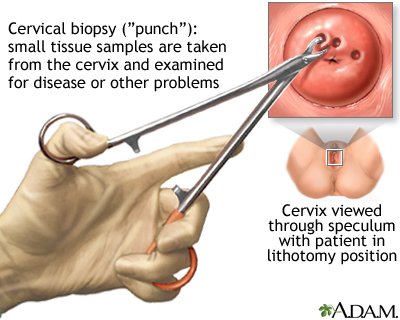Cervical cancer is one of the most common types of cancer among women worldwide. Early detection is crucial in ensuring successful treatment, and a cervical biopsy is an integral part of the diagnosis process. A cervical biopsy tool is used to collect tissue samples from the cervix for examination under a microscope. In this article, we will explore the different types of cervical biopsy tools, their uses, and what to expect during the procedure.
Types of Cervical Biopsy Tools
There are three main types of cervical biopsy tools used by healthcare providers: punch biopsies, endocervical curettage (ECC), and cone biopsies.
1. Punch Biopsies
A punch biopsy is a quick and straightforward procedure that involves removing a small sample of tissue using a circular cutting tool called a punch. This type of biopsy is often used when abnormal cells are detected during a Pap smear test or colposcopy. The punch biopsy tool can be used to take multiple samples from different areas of the cervix.
2. Endocervical Curettage (ECC)
An ECC involves scraping the inside of the cervix using a metal or plastic curette tool. This type of biopsy helps healthcare providers collect tissue samples from the endocervical canal, where abnormal cells may not be visible through colposcopy or Pap smear tests. An ECC is often performed along with a punch biopsy to ensure thorough sampling.
3. Cone Biopsies
A cone biopsy is a more invasive procedure that involves removing a cone-shaped piece of tissue from the cervix. This type of biopsy may be recommended if abnormal cells are found deeper within the cervix or if previous biopsies have been inconclusive. Cone biopsies are typically performed under general anesthesia and require several weeks of recovery time.
What To Expect During A Cervical Biopsy
If a healthcare provider suspects cervical cancer, they may recommend a biopsy. Before the procedure, patients will be asked to provide a medical history and undergo a physical exam. Patients may also need to avoid sexual activity, tampons, and douching for several days before the procedure.
During the biopsy, patients will lie on an exam table with their feet in stirrups. A speculum will be inserted into the vagina to provide access to the cervix. Local anesthesia may be applied to numb the area before the biopsy is performed.
After the biopsy, patients may experience mild cramping or spotting for several days. It is essential to avoid sexual activity and tampon use until cleared by a healthcare provider.
Conclusion
Cervical biopsies are an essential tool for diagnosing cervical cancer and other abnormalities of the cervix. Depending on the patient’s individual circumstances, different types of cervical biopsy tools may be used during the procedure. If you suspect that you may have abnormal cells or are due for a routine Pap smear test, talk to your healthcare provider about whether a cervical biopsy is necessary.
References:
1. “Cervical Cancer.” Mayo Clinic, 26 July 2019, https://www.mayoclinic.org/diseases-conditions/cervical-cancer/symptoms-causes/syc-20352501.
2. “Cervical Biopsy.” Johns Hopkins Medicine, 2021, https://www.hopkinsmedicine.org/health/treatment-tests-and-therapies/cervical-biopsy.
3. “Biopsy for Cervical Cancer.” American Cancer Society, 22 June 2020, https://www.cancer.org/cancer/cervical-cancer/detection-diagnosis-staging/biopsy.html.




